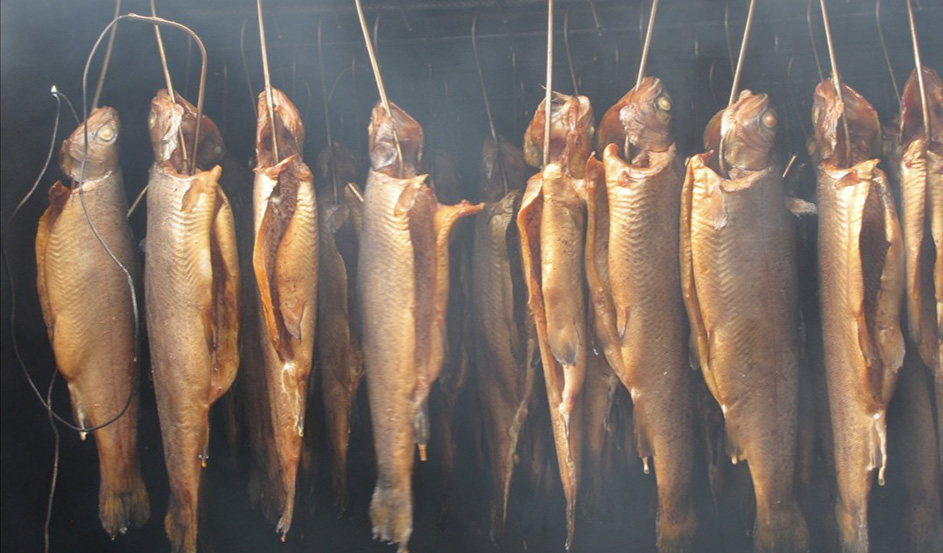
A PRIMER ON SMOKING AND CURING

I’ve recently short listed a number of cooking techniques in which I want to further my understanding. The science of cooking extends well beyond what has been popularized in the media; limiting it to culinary foams, gels and the likes. In the last couple of years there has been a movement by a number of high profile chefs around the world to re-examine some of the most tried and tested culinary techniques. In doing so there has been a revival of the importance of techniques including something as old as smoking and curing.
I’ve started off my list with smoking and curing which I think is rather appropriate given that it is a technique possibly discovered as long ago as the stone age. So after a few weeks of reading (mainly Kieth Erlandson’s; Home Smoking and Curing, and Harold McGee’s On Food and Cooking) as well as a lot of online research, I’ve put together all the basic information you need to know about smoking and curing if you wish to learn more or even try it out yourself.
Smoking was initially used as a method of preservation and extending the life of food. The process does this in two ways; first of all it turns out that smoke can mask a stale fishy smell while also preserving both the fish and its flavour, secondly the burning wood produces chemicals which have antibacterial and antimicrobial properties. Nowadays foods are both cured and smoked in a much milder fashion than they were back in the day, this is because smoking is mainly used for flavour now as opposed to preservation.
Most products which are to be smoked will be pre-salted (in dry salt or a brine) and dried. The pre-salting will usually take a matter of hours but can last days. This process allows the product to pick up a little salt while also drawing out the proteins to the surface (in fish it is most notably the myosin that is drawn to the surface).
The brine strength can be varied according to the type of product being used, however the most commonly used brine is an 80% solution which is 1.2kg of salt to every 4.54 liters of water. When brining the best type of vessel to use is either made of plastic or the more traditional wood, as metal containers can taint the flavour. Another important point is that fish and meats should be brined separately, as fish will taint the flavour of the meat products in the brine. Finally its an issue of time and temperature; when using a strong brine (such as the standard 80% solution) only a matter of a few hours are required and therefore the temperature of the brine is not too important (anything below room temperature is fine), however when a long brining process is involved the brine should first be chilled to about 1.5C before the product is immersed, and then refrigerated throughout the entire brining period.
The next step is to hang the meat or fish and allow it to drip dry, this helps get rid of any excess moisture and reduces the smoking period required.When fish is treated in this way the myosin on the surface forms a shiny gel or pellicle that will give the smoked fish a nice golden sheen. According to McGee; the gold colour is created by browning reactions between aldehdes in the smoke and amino acids in the pellicle, as well as condensation of dark resins from the smoke vapor.
Salmon sides, poultry, game, venison and beef are recommended to be hung for 24 hours in a room at a temperature of around 21C. Humidity will play a role in the period required, so variations may be required. Also; small birds, beef, venison and fish should be protected from drying wind, which can cause a hardening of the outer layer forming a case.
Once the product is cured and pre-dried, it is ready for smoking!
Cold Smoking:
Some cold smoked products are ready to be consumed ‘raw’ – straight after the smoking process is completed, smoked salmon and beef fillet are good examples. There are other cold smoked products such as cod fillets and haddock which require further cooking post smoking.
As cold smoking does not ‘cook’ the product it is usually done at temperatures of around 10C and 29C (50F and 85F) using wood chips or saw dust as opposed to burning logs. The low temperature avoids hardening the surface and forming a barrier to moisture movement from the interior. It also allows the product to lose some moisture and become denser without being cooked. This is particularly important for fish, as the flesh is so delicate that excessive heat would denature connective tissue collagen and the whole fish would flake to pieces.
The loss of moisture is essential to the smoking process, and the more moisture lost the greater the keeping qualities of the final product. For salmon, the finished product must lose about 17 to 18% of its weight, kippers should loose around 14 to 18%, trout should be slightly higher at around 20% and beef fillet should be even higher at around 20 to 25%.
Hot Smoking:
Hot smoked products under go the same processes described above; from curing to cold smoking. Once the product has been cold smoked it is then cooked at temperatures which gradually rise to around 82C (180F) and never higher than 93C (200F) in the case of fish. Care must be taken in the initial cold smoking that temperatures do not exceed 29C (85F) as fish will form a hard case, preventing further smoke penetration and adequate loss of moisture.
Meat, game and poultry are generally easier to hot smoke than fish, as they are more tolerant of variations in temperature and can be smoked at as high as 115C (240C). Nonetheless even these products can become spoilt by overcooking, by becoming unacceptably dry which results in a poor texture and loss of the smoky flavour.

